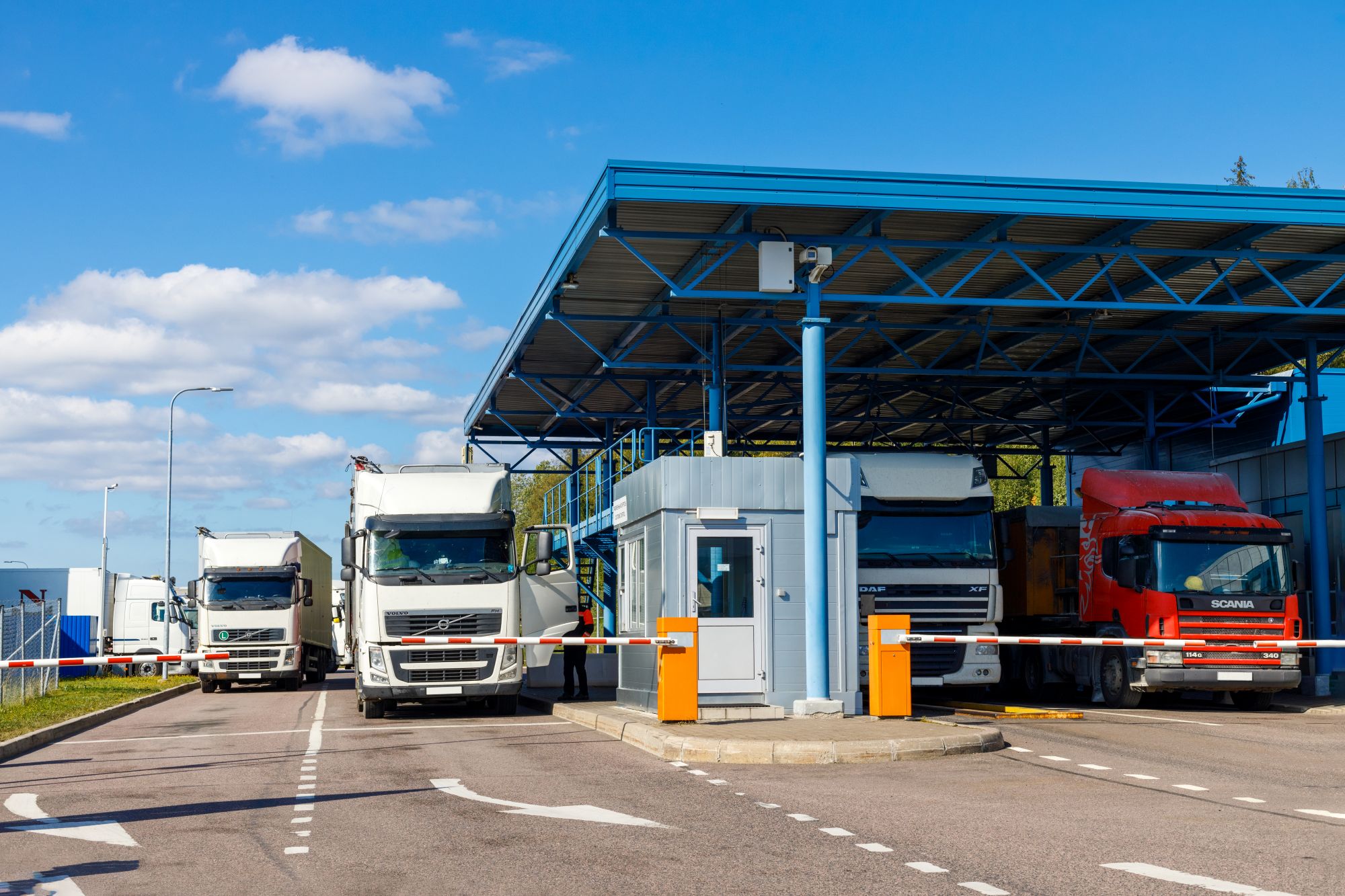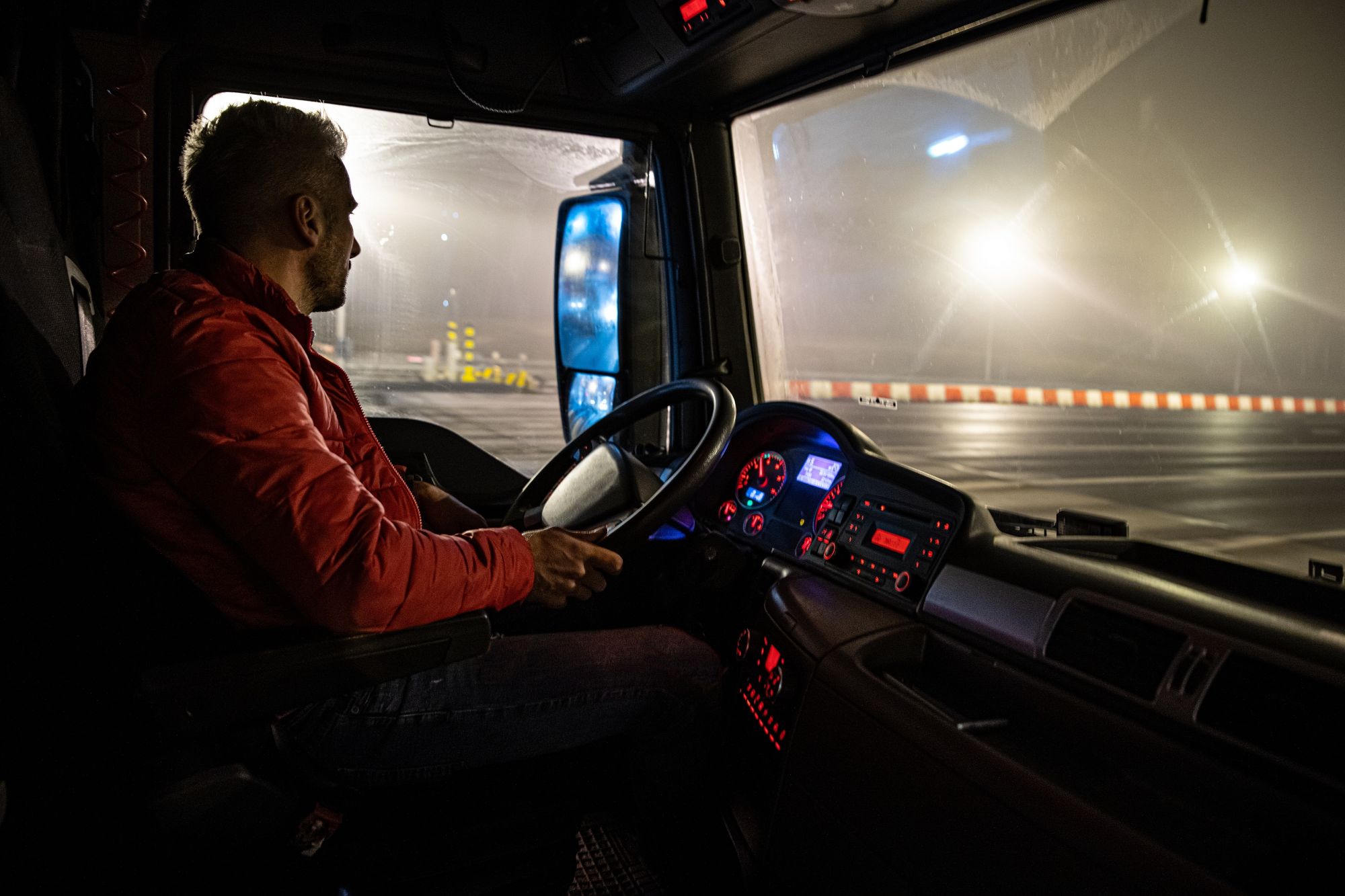
Guest
Reabertura da fronteira entre a Polónia e a Ucrânia: O que os operadores de frotas precisam de saber
Criado: 18/06/2025
•
Atualizado: 20/06/2025
Após meses de perturbações, o tráfego de mercadorias entre a Polónia e a Ucrânia está novamente a circular livremente. No entanto, com as tensões ainda latentes e a ameaça de novos bloqueios na mente de todos, os operadores de frotas devem permanecer atentos aos riscos e preparados para proteger o bem-estar dos condutores em ambos os lados da fronteira.
Este artigo explica o que causou a interrupção, como afectou os condutores e as medidas que pode tomar para reduzir o impacto se a ação industrial voltar.
O que causou o bloqueio da fronteira Polónia-Ucrânia em 2024?
A situação começou no final de 2023, quando os camionistas polacos começaram a protestar nos principais postos fronteiriços. Alegaram que a decisão da UE de dispensar os transportadores ucranianos da obtenção de licenças - introduzida como medida temporária em tempo de guerra - conduziu a um afluxo de operadores de baixo custo que prejudicaram as empresas polacas.
Os protestos intensificaram-se, bloqueando as principais rotas de transporte de mercadorias para a Ucrânia e encurralando milhares de veículos em filas que se estendem por quilómetros. No seu auge, o bloqueio deixou [mais de 5.000 camiões retidos] (https://www.npr.org/2024/01/07/1223065019/20-mile-backup-as-polish-truckers-blockade-border-in-standoff-with-ukrainian-dri) na fronteira, alguns dos quais esperaram mais de uma semana para atravessar. Também os condutores não ucranianos da UE sofreram longos atrasos, horários sobrecarregados e más condições.
O que começou por ser um conflito logístico evoluiu para um protesto mais amplo dos camionistas polacos contra as importações ucranianas, o acesso ao mercado e o impacto das medidas de emergência da UE em matéria de transportes. Os agricultores polacos não tardaram a aderir, frustrados com o efeito dos produtos agrícolas ucranianos nos preços internos.
Os motoristas polacos também [criticaram o sistema eletrónico de filas de espera da Ucrânia] (https://www.pravda.com.ua/eng/news/2023/11/29/7430863/) para a passagem das fronteiras - conhecido como eCherha - argumentando que colocava os transportadores da UE em desvantagem. Embora o sistema tenha sido concebido para agilizar a circulação de mercadorias, permitindo que os transportadores reservem previamente as faixas horárias de passagem, os operadores polacos alegaram que o sistema proporcionou às empresas ucranianas uma maior flexibilidade e um acesso mais rápido. Questões como as barreiras linguísticas, a integração limitada com os sistemas logísticos da UE e a aplicação incoerente fizeram com que muitos condutores da UE esperassem mais tempo na fronteira, alimentando ainda mais a perceção de tratamento injusto e contribuindo para uma maior agitação.
Cronologia dos bloqueios da fronteira Polónia-Ucrânia
novembro de 2023: Começam os protestos nos postos fronteiriços de Dorohusk, Hrebenne e Korczowa.
dezembro de 2023: Mais travessias são bloqueadas, incluindo Medyka; três condutores ucranianos morrem nas filas de espera.
janeiro de 2024: O governo polaco chega a um acordo para suspender o bloqueio até março.
março-abril de 2024: Recomeçam os bloqueios esporádicos nos pontos de passagem mais pequenos.
maio de 2025: Começou um novo bloqueio de quatro meses em Yahodyn-Dorohusk, mas foi anulado em tribunal.
junho de 2025: Todos os principais postos fronteiriços permanecem abertos, mas o risco de futuras perturbações mantém-se.
O que está o Governo polaco a fazer para melhorar a situação?
Em resposta à perturbação e às suas implicações mais vastas, o governo polaco tomou uma atitude proactiva. Os postos fronteiriços com a Ucrânia foram designados como infra-estruturas críticas, o que lhes confere maior proteção contra futuros bloqueios e ajuda a assegurar o fluxo contínuo de mercadorias, ajuda humanitária e apoio militar.
Foi também criado um novo Conselho de Cooperação com a Ucrânia, com o objetivo de reforçar os laços entre os dois países. Parte do seu mandato consiste em melhorar a coordenação entre o comércio e os transportes. Paralelamente, a Polónia está a investir nas infra-estruturas da fronteira oriental e a dialogar com os funcionários da UE para obter condições mais justas para os transportadores polacos. Embora estas acções possam não resolver a situação de um dia para o outro, assinalam um compromisso a mais longo prazo no sentido da estabilidade e de um diálogo estruturado.

O impacto nos condutores
O bloqueio criou condições inaceitáveis para os motoristas profissionais. Muitos passaram dias ou semanas nos seus táxis, sem acesso a casas de banho, alimentos ou água corrente. Alguns ficaram presos em temperaturas negativas, sem aquecimento ou abrigo.
[Três condutores ucranianos morreram] (https://www.reuters.com/world/europe/third-ukrainian-truck-driver-dies-poland-border-blockades-tv-2023-12-16/) durante o período de bloqueio, tendo a exaustão e os problemas de saúde não tratados sido considerados factores contribuintes.
As perturbações causaram também uma tensão mental e emocional significativa, especialmente para os condutores ucranianos que tentavam chegar ou regressar a casa em tempo de guerra. Os atrasos afectaram não só o comércio, mas também a circulação de combustível, ajuda e bens militares essenciais para a defesa nacional da Ucrânia.
Enquanto os manifestantes polacos insistiam que os veículos de ajuda humanitária e militar eram autorizados a passar a fronteira, [relatórios das autoridades ucranianas] (https://www.reuters.com/world/europe/around-3000-trucks-stuck-ukrainian-border-due-polish-drivers-blockade-2023-11-19/) indicam que nem sempre foi esse o caso.
Estas condições não foram apenas traumáticas para os condutores - também expuseram lacunas na gestão dos riscos da frota e no planeamento de emergência. Os operadores devem agora tratar as perturbações nas fronteiras como uma ameaça permanente.
O que os operadores de frotas precisam de saber
Embora a situação tenha estabilizado, as tensões subjacentes entre os transportadores polacos, os operadores ucranianos e a política da UE continuam por resolver. Os gestores de frotas que operam na região ou perto dela devem estar atentos à possibilidade de novas acções colectivas, especialmente durante os períodos de pressão sazonal ou de revisão da política da UE.
Eis as recomendações da equipa SNAP para gerir eficazmente a situação:
1. Acompanhar a situação na fronteira entre a Polónia e a Ucrânia
Mantenha-se atualizado com as notícias das associações de logística polacas e ucranianas e de fontes governamentais. Subscreva os alertas de tráfego fronteiriço e siga parceiros logísticos de confiança para obter actualizações em tempo real.
2. Planear itinerários flexíveis
Tenha planos de contingência que redireccionem os veículos através da Hungria, Eslováquia ou Roménia se as passagens entre a Polónia e a Ucrânia voltarem a ficar bloqueadas.
3. Apoiar o bem-estar dos condutores
Certifique-se de que os seus camiões estão abastecidos com bens essenciais: alimentos, água, bancos de energia e kits médicos.
Durante períodos de agitação, o acesso a estacionamento seguro para camiões na Polónia é essencial, para que os seus condutores estejam seguros, descansados e fora da estrada. Forneça aos condutores informações actualizadas sobre estacionamento seguro para camiões e áreas de descanso ao longo do seu percurso.
A nossa [aplicação intruck] (https://intruckapp.com/) tem um mapa interativo de estacionamento para camiões, com 11 000 prestadores de serviços para veículos pesados de mercadorias em toda a Europa, incluindo a Polónia, a Hungria e a Eslováquia. É uma ferramenta fácil de utilizar para encontrar áreas de repouso seguras para camiões na Polónia, o que a torna especialmente valiosa durante períodos de ação industrial.
Embora a aplicação não ofereça atualmente estacionamento reservável para camiões na Ucrânia, os operadores e condutores ucranianos podem utilizar a intruck para localizar paragens de repouso fiáveis na UE durante viagens de longa distância ou períodos de interrupção.
4. Reservar soluções de estacionamento seguro para camiões na Polónia
Com o aumento da procura durante os períodos de perturbação, a reserva antecipada é fundamental. Os condutores também podem utilizar a intruck para encontrar e reservar antecipadamente estacionamento de confiança para camiões na Polónia. Quer os seus veículos se desloquem para a Europa de Leste ou regressem a Oeste, a intruck permite aos seus condutores aceder a estacionamento para camiões perto de Varsóvia e de outras zonas de grande tráfego.
5. Comunicar regularmente com os condutores
Estabelecer horários de registo, especialmente se forem esperadas longas esperas ou desvios. Assegure aos condutores que o seu bem-estar é uma prioridade e dê-lhes apoio se tiverem de enfrentar atrasos inesperados. Se possível, sugira com antecedência locais seguros para o estacionamento de camiões na Ucrânia, para que saibam onde fazer uma pausa.
Olhando para o futuro
A reabertura da fronteira entre a Polónia e a Ucrânia é uma boa notícia para as frotas que operam na Europa de Leste. Mas com as tensões políticas por resolver, é essencial manter-se preparado.
"A situação está a mudar rapidamente", afirma Nick Renton, Diretor de Estratégia Europeia e Desenvolvimento Comercial da SNAP. "Com a possibilidade de mais perturbações na fronteira entre a Polónia e a Ucrânia, recomendamos que os operadores de frotas implementem planos sólidos para dar prioridade ao bem-estar dos condutores e minimizar os riscos operacionais. Isto inclui a criação de flexibilidade nos horários de entrega, o fornecimento de bens essenciais nos veículos e a garantia de que os condutores têm acesso a estacionamento seguro para os camiões.
"A nossa rede de paragens de camiões reserváveis em toda a Europa e na Polónia dá-lhe as ferramentas para se manter ágil - oferecendo tranquilidade aos operadores e aos condutores quando as condições no terreno se tornam imprevisíveis."
Veja o nosso mapa interativo de [estacionamento seguro de camiões na Polónia hoje] (https://snapacc.com/map/poland).



